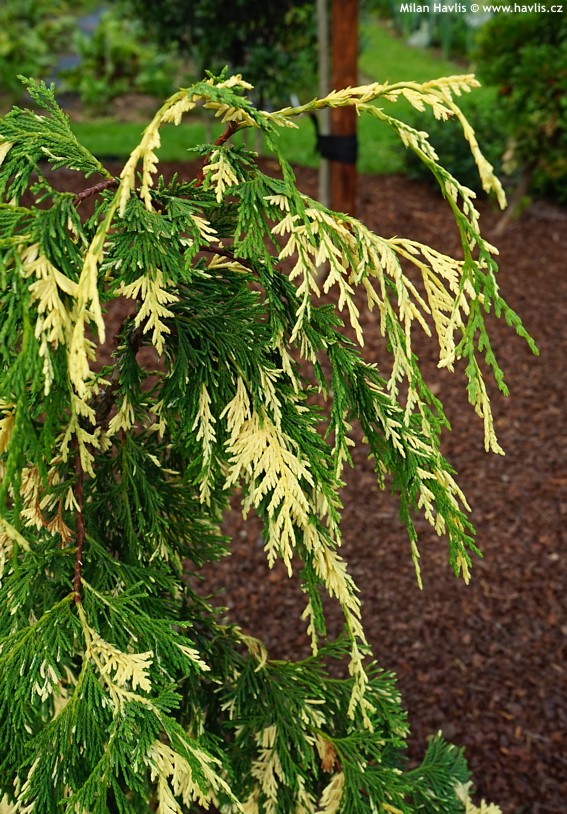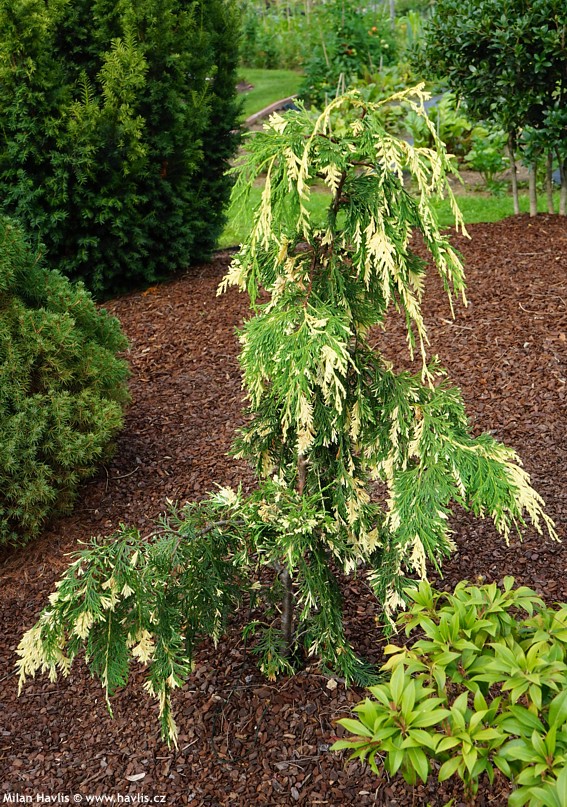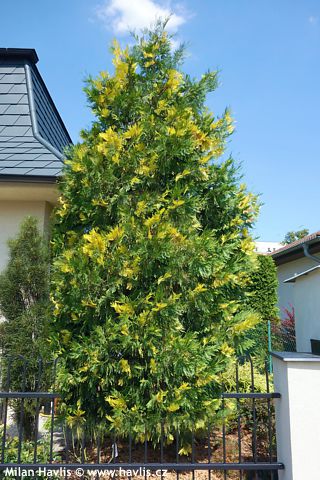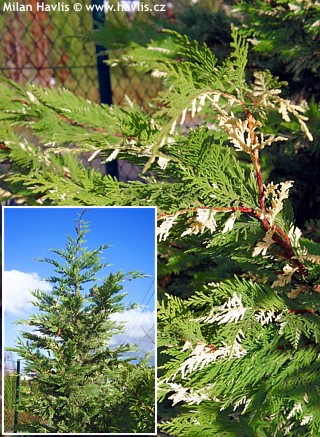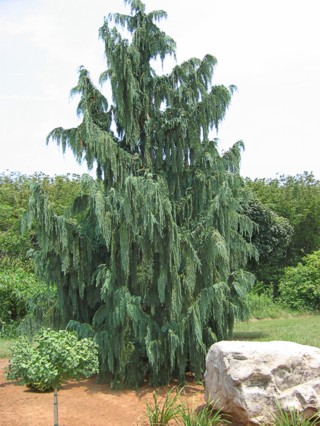Chamaecyparis nootkatensis 'GLORIA POLONICA' nootka cypress
size/type
medium-sized tree,medium-sized tree
usual height
6-10m
usual width
3-5m
leaves
evergreen conifer
colour of leaves
location
full sun
USDA zone (lowest)
4 (down to -34°C)
winter protection
for zone 5+6

for zone 7

categorized
Chamaecyparis
Weeping forms of nootka cypress are darlings among conifers. Their unique structure makes the tree look like a conifer with veils. The main branches are horizontal and deflected, lateral branches are 100% drooping. We know that the species comes from North America (Alaska, British Columbia) but we found the botanists puzzled when they are to name it correctly. It appears that the plant hybridizes readily with anything willing to cross hence the difficulties with its classification. Formerly it was called cupressus, later xanthocyparis, now we believe that chamaecyparis is the right thing, but some foresee its future as callitropsis.Description of the plant:
Don't mind the name of nootka cypress. Let's have a look a look at one of its variegated cultivars. There have been a few already, yet this one - Gloria Polonica is special and very beautiful. Its thread-like branches are covered with medium green and creamy yellow scale-like needles in almost even ratio 50:50. Branches are weeping as well as the leader on young plants so staking is a suggested procedure. It grows much slower than it green-leaved brother Pendula and in 10 years it can reach some 2-2.5m tall and half as wide.Its attractive colour play gets more pronounced with the first cold autumn days, and brightens up every dark corner. Which is also why the jury of Plantarium exhibition of novelties awarded the plant with Bronze Medal in 2008. The variety was selected by Michał Kałuziński from Dendrofama in Poland in 1997, and patented ten years later.
Weeping nootka cypress is not a tiny piece but a show-stopping specimen. This variety needs time to grow but when it matures it can be anything from 6 to 10 m tall, or even more in parks and arboretums with unlimited space for root system. It dislikes air pollution. Pruning can be done in early spring if you wish to keep the tree smaller. It prefers moist, slightly acidic soil but is adaptable to almost all types of soil. Fully hardy to -34°C (USDA zone 4).
Last update 08-09-2019
QUICK PRICE OVERVIEW
CURRENTLY SOLD OUT
WANT TO TRY A SIMILAR PLANT?













